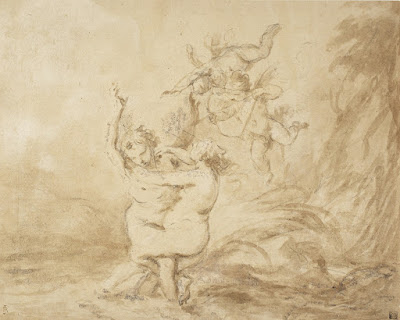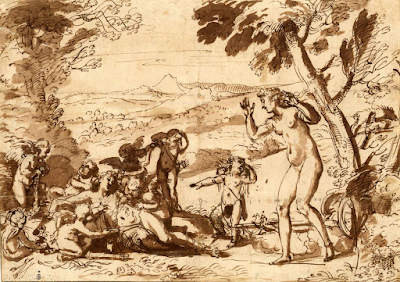 |
| Francesco Albani Fall of Phaeton ca. 1609 drawing Royal Collection, Windsor |
 |
| Francesco Albani Mercury ca. 1609 drawing Royal Collection, Windsor |
 |
| Francesco Albani Musical Angel before 1660 drawing National Library of Brazil, Rio de Janeiro |
 |
| Francesco Albani St John the Evangelist, with Eagle ca. 1605 drawing Royal Collection, Windsor |
 |
| Francesco Albani Christ appearing to the Virgin ca. 1597-99 drawing, with watercolor Royal Collection, Windsor |
 |
| Francesco Albani Allegorical Design for Ceiling Fresco ca. 1650 drawing, with watercolor Metropolitan Museum of Art, New York |
 |
| attributed to Francesco Albani Baptism of Christ ca. 1620-24 drawing Royal Collection, Windsor |
 |
| attributed to Francesco Albani Caricatures of Cobblers before 1660 drawing British Museum |
 |
| attributed to Francesco Albani Salmacis and Hermaphroditus ca. 1620 drawing Princeton University Art Museum |
 |
| Francesco Albani Death of Adonis ca. 1610-15 drawing British Museum |
 |
| Francesco Albani Diana Bathing before 1660 drawing Metropolitan Museum of Art, New York |
 |
| Francesco Albani Goddess inciting a Warrior before 1660 drawing Metropolitan Museum of Art, New York |
 |
| Francesco Albani Muse of Painting and the Artist before 1660 drawing Fine Arts Museums of San Francisco (Achenbach Foundation) |
 |
| Francesco Albani Rest on the Flight into Egypt 1657 drawing Art Institute of Chicago |
 |
| workshop of Francesco Albani Pan and Syrinx ca. 1630 drawing Detroit Institute of Arts |
"In contrast to the hundreds of surviving sheets by the Carracci and by such pupils and followers as Domenichino, Guido Reni, and Guercino, no major corpus of drawings by the Bolognese artist Francesco Albani (1578-1660) – a successful graduate of both the workshop of Denys Calvaert and the Carracci academy – has come down to us. This is all the more surprising given Albani's role as a successful and popular teacher with an unusually large complement of pupils, and as a moving force in the establishment of an Accademia del Disegno in Bologna in the 1640s and 1650s, the main activities of which seem to have been life drawing and drawing competitions. One would have expected drawing to have been a core activity in his studio, from which emerged such talented draftsmen as Andrea Sacchi, Pier Francesco Mola, and Carlo Cignani. Moreover, in most respects Albani was a firm adherent of the traditions established by the Carracci in their native city, one of the strongest and most enduring of which was the emphasis on good draftsmanship and the centrality of its role in all aspects of artistic creativity."
"A partial explanation for the scarcity of drawings by Albani is provided by the English artist and diarist Richard Symonds, who visited his studio in 1651 and recorded – in his extraordinary hybrid Anglo-Italian – that the artist did not make preparatory drawings. "One of his Allievi told me, he never uses to designe but takes chalks & fall to work presently beginning to abozzare . . . also the same person told me he uses no modello but all postures done a mento by Idea." It is certainly true that very few of the published drawings by Albani date from the later part of his career, indicating that he may have made fewer drawings as he got older. . . . What seems clear is that no large body of drawings by Albani was kept together in his studio for future reference or as a teaching resource, to be passed on eventually to his heirs (as in the case of Guercino) or to a favored pupil (as in the case of Domenichino)."
– Aidan Weston-Lewis, from the article Francesco Albani "Disegnatore" published in the journal Master Drawings (Autumn, 2006)